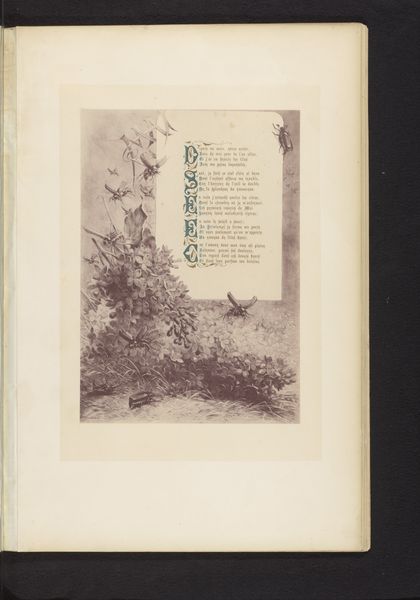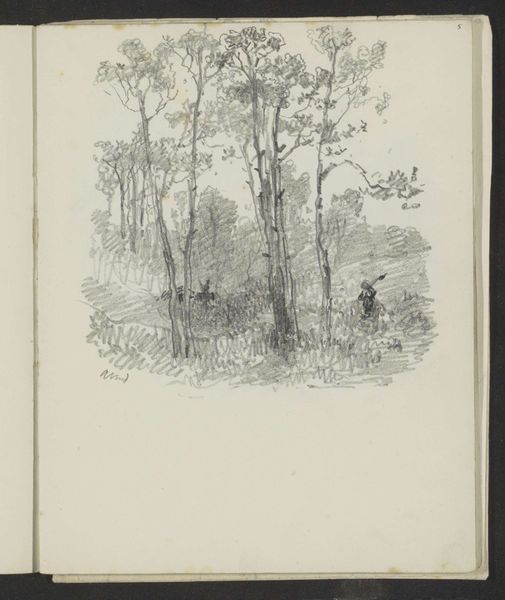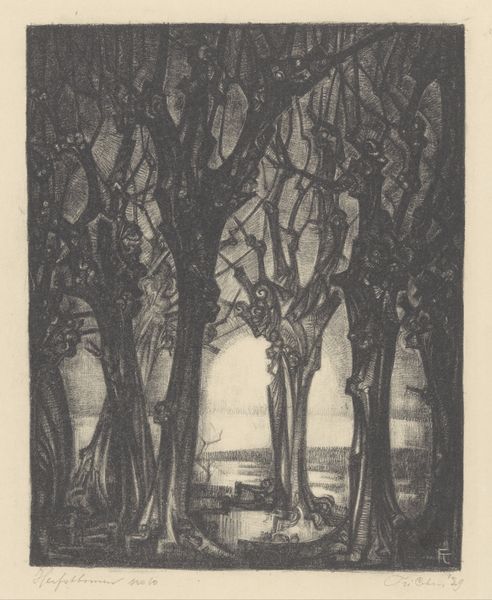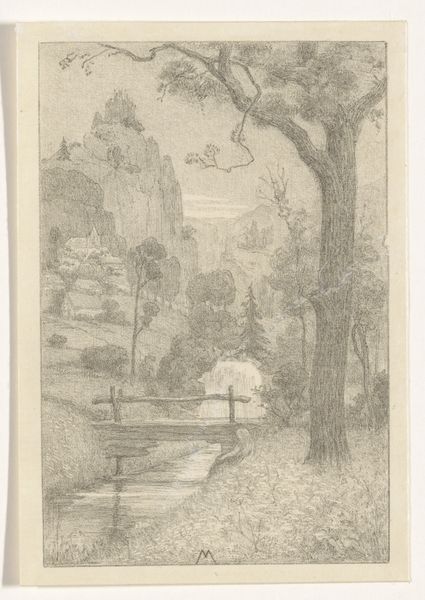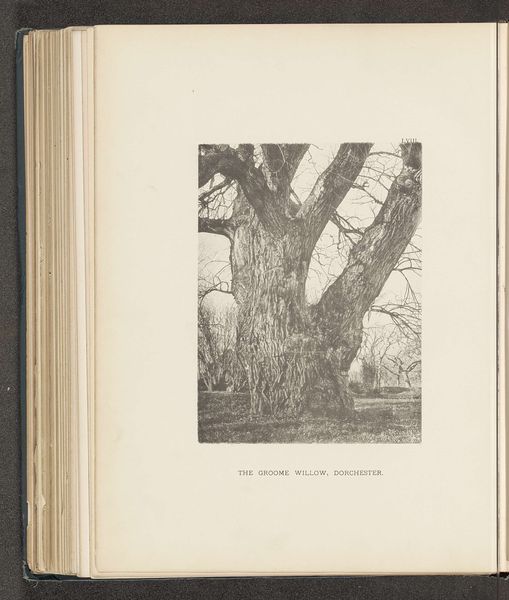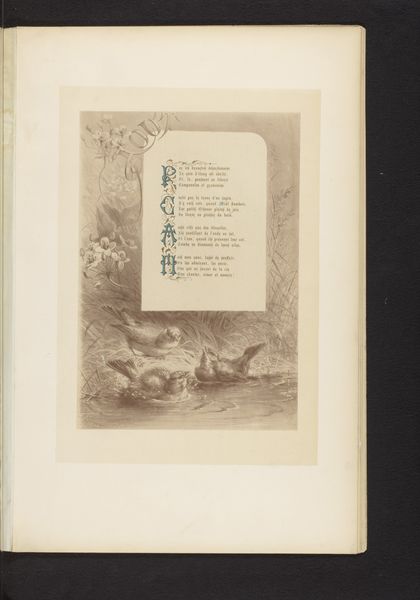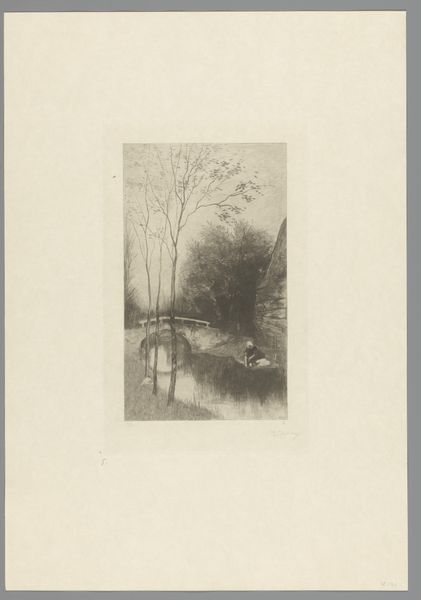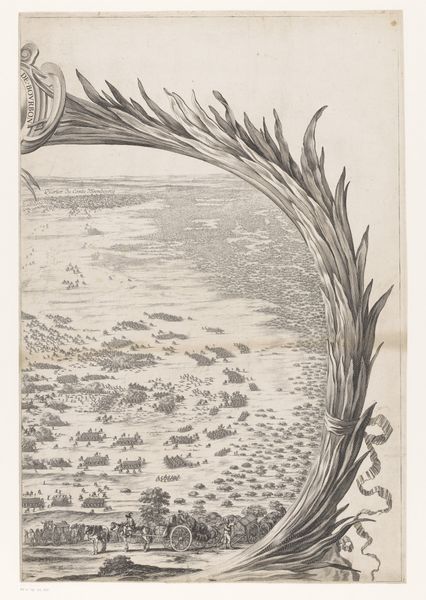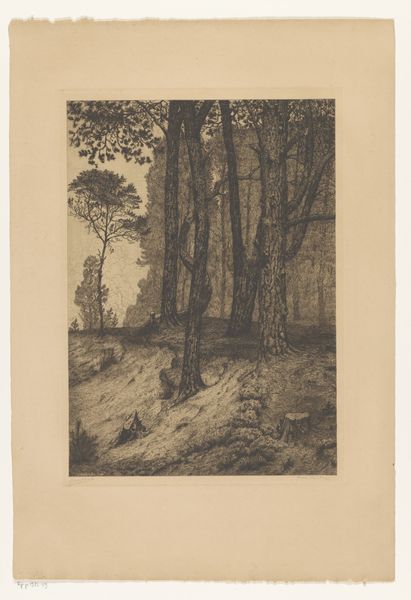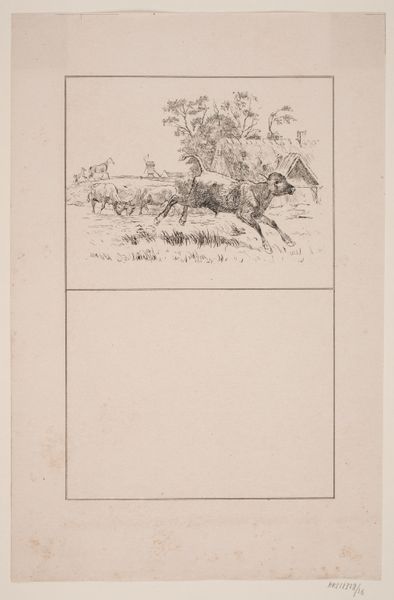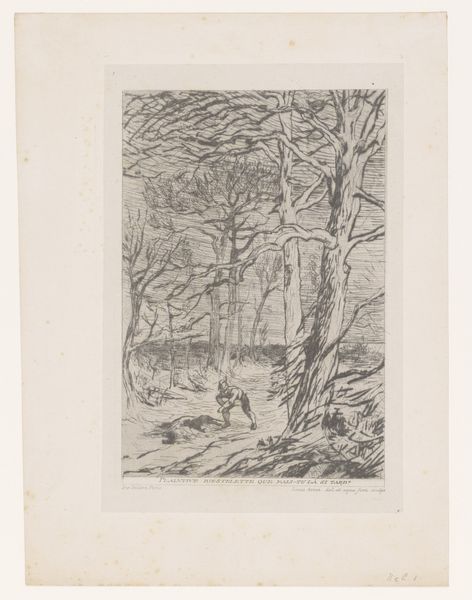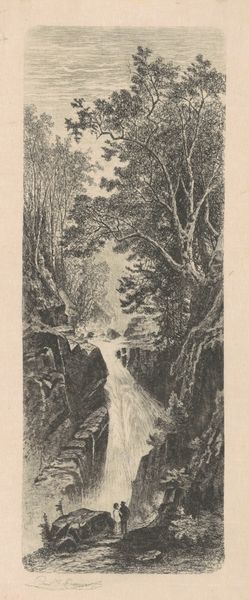
print, etching
# print
#
etching
#
landscape
#
symbolism
#
watercolour illustration
#
watercolor
Dimensions: height 368 mm, width 266 mm
Copyright: Rijks Museum: Open Domain
Editor: So, here we have "De Reiger," or "The Heron," by Firmin Bouisset, made sometime between 1876 and 1890. It’s an etching and print. I’m really struck by how still and contemplative it feels. What do you see in this piece? Curator: It’s interesting that you perceive stillness. This work really reflects the rise of symbolism and its complex relationship with nature at the fin de siècle. We see an attempt to elevate everyday scenes like this to a new, symbolic status. Etchings, as reproducible media, allowed wider audiences to engage with such aesthetic movements. Do you notice the poem included? Editor: I do. It seems…separate from the illustration, almost pasted on. How would the inclusion of that text have been perceived at the time? Curator: Good question. The inclusion highlights the role of text and image in disseminating cultural and moral values. Symbolism sought a synthesis of the arts - poetry, visual art, music - to evoke a unified emotional experience. So the integration would have appealed to those interested in creating this unity. It reflects a deliberate attempt to elevate the print from mere illustration to something richer and deeper, something that invites active interpretation. The heron is not just a bird; it becomes a symbol loaded with meaning, tied to the verse alongside it. Editor: I see. So, understanding this work means considering both the visual and the textual elements as intentionally intertwined? Curator: Precisely. How does that new layer influence your view? Editor: It makes me wonder what exactly that bird represents! Thank you, that definitely changed how I'll think about this artwork from now on! Curator: It’s fascinating how the historical context shapes our interpretation. Seeing the symbolism through that historical lens is crucial.
Comments
No comments
Be the first to comment and join the conversation on the ultimate creative platform.
